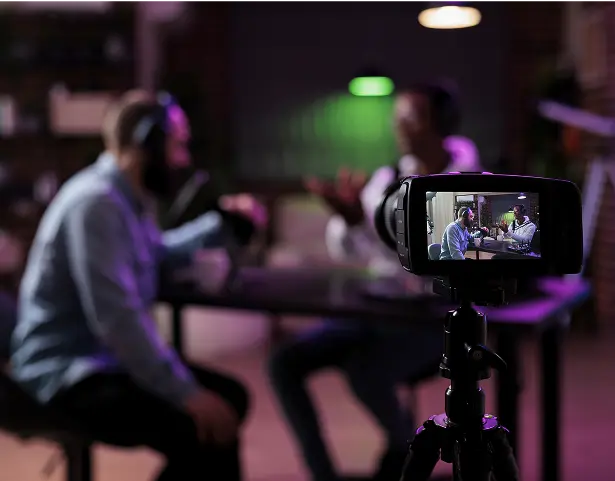 Part of the doomed plane lies in the crash site and is looked over by the authorities (AP Photo)
Part of the doomed plane lies in the crash site and is looked over by the authorities (AP Photo)Current as of 10:45am, BKK; this is an ongoing story and Travel Daily Media will update when new information is available.
The results of the preliminary investigation into the deadly crash of Air India Flight 171 on 12th June show that the aircraft's fuel switches had been set to the cutoff position just before impact.
According to a report from the Associated Press (AP) updated at 12:11am BKK today, 13th July, investigators noted that the fuel control switches of the ill-fated Boeing 787-8 Dreamliner were moved from the “run” to the “cutoff” position, depriving its engines of fuel.
In turn, this led to a loss of engine thrust soon after the plane took off.
The Indian Aircraft Accident Investigation Bureau (AAIB) pointed out that there was confusion on the part of both pilots regarding the changed settings.

This graphic from Australia's ABC News shows how it is unlikely that the fuel switches were turned off accidentally
What we know so far
The Air India flight lasted around 30 seconds between takeoff and impact.
Per the report, once the Dreamliner hit its top recorded speed: “Engine 1 and Engine 2 fuel cutoff switches transitioned from RUN to CUTOFF position one after another.”
This unusual situation occurred in mere seconds, but the initial report made no mention as to how the switches could have flipped to the cutoff position during the flight.
Indeed, Australian experts speaking with the Australian Broadcasting Corporation (ABC)’s news bureau pointed out how unlikely it was that the shift was accidental.
Australian International Pilots Association (AIPA) technical director and 737 pilot Steve Cornell declared: "It's not the situation where you would just both be sitting there very quietly. It'll be a very busy time trying to work out what had happened and trying to fix it."
Cornell and other experts say that it is impossible to flip or even bump into these switches by accident.
Boeing engineers designed the fuel switches with a locking mechanism that prevents inadvertent movement.
Unlike the aircraft’s thrust levers, the fuel control switches are not connected to the plane's autopilot function.
That also means it is highly unlikely that the plane could have somehow malfunctioned and automatically flipped the switches to the cutoff setting.
Cornell said: "The only thing that can affect their position is something that we do as pilots.”
Another Australian aviation expert, Keith Tonkin, concurred with this, saying: "It means that almost certainly, one of the pilots, who would be the only people able to access those switches, has made the decision to physically switch the fuel off to the engines.”
This supposition is chilling as it raises the possibility that the crash may have been a deliberate move on the part of one of the pilots.

Firefighters hose down the smouldering wreckage of Air India Flight 171 (Reuters)
Indian expert theorises that this was no accident
Invited to comment for Indian news network NDTV on Saturday, 12th July, just as the initial findings were released, one of the country’s leading aviation experts posited the theory of deliberate human action
Mohan Ranganathan called the public’s attention towards the sequence of fuel cutoff switches and cockpit audio, giving weight to the possibility that the crash may have stemmed from deliberate actions taken in the cockpit, potentially even suicide.
Ranganathan explained, essentially echoing the statements of his Australian peers: "It has to be manually done. It cannot be done automatically or due to a power failure because the fuel selectors are not the sliding type. They are designed to stay in a slot, and you have to pull them out to move them up or down. So, the possibility of inadvertently moving them to the OFF position doesn't arise. It's definitely a case of deliberate manual selection to move it to OFF."
He went on to say that there is no other possible explanation, given current findings, as to why both the fuel switches were moved to the OFF position just after takeoff and just as the engines began rotating.
Ranganathan also pointed out a dialogue between the pilots captured by the aircraft’s audio recorder: “According to the cockpit voice recorder, one pilot asks, 'Why did you do it?' and the other pilot responds, 'I did not do it.' This is where the report shows some discrepancies,"
Indian authorities, however, have asked the public to refrain from jumping to further conclusions pending the ongoing investigation which could run till the end of the year.
Civil aviation minister Kinjarapu Ram Mohan Naidu went so far as to say: “I don't think we should jump into any conclusions over this. I believe we have the most wonderful workforce of pilots and crew in the whole world. I have to appreciate all the efforts the pilots and crew of the country are putting; they are the backbone of civil aviation. They are the primary resource of civil aviation. We care for the welfare and well-being of the pilots also. So let us not jump into any conclusions at this stage and wait for the final report,”

A member of the Air India ground staff joins a prayer service in memory of those lost in the crash (AP Photo)
More questions than answers
In addition to the details regarding the fuel switches, the report also pointed out that Air India Flight 171 was nearly 5,000kg under the maximum take-off weight, still within permissible limits.
Likewise, no dangerous goods were noted on the aircraft, and there was no significant avian activity within the vicinity of the flight path that could have put bird strikes as a potential factor.
Given the current results, the AAIB also stated that there are presently no recommended actions involving Boeing and/or GE engine operators and manufacturers.
But for the families left behind by those who perished in the crash, the initial report brings no comfort.
Speaking with the BBC, Imtiyaz Ali who lost his brother, sister-in-law, and their two children was disappointed, referring to the way the report was presented as more like a product description.
Ali said: "Other than the pilots' final conversation, there's nothing in it that really points to what caused the crash. This matters to us; we want to know exactly what happened. It won't change anything for us now, we continue grieving just as we have since that day. But at least we'll have some answers."
For now, alas, the results of the investigation have raised more questions than answers, questions that we may not see answered until the end of the investigation.




















